La isla mona puerto rico: Isla de Mona | Discover Puerto Rico
ISLA MONA FACTS
General
Island name: Isla de la Mona.
Country: Puerto Rico (RQ).
Language: Spanish, English.
Capital: San Juan.
Population: The island is a natural reserve and, though there
are no native inhabitants, rangers from the island’s Department of Natural
and Environmental Resources reside on the island to manage visitors and
take part in research projects.
Climate: Semi-arid sub-tropical.
Geography
Area: Isla de Mona has 57 sq km (22 sq mi).
Coastline: km.
Geographic coordinates: 18 15 N, 66 30 W.
Highest point: .
Location: 66 km west of Puerto Rico and 61 km east of Hispaniola.
Size: 11 km (7 miles) long and 7 km (4 miles) wide.
Terrain: Flat. There are many high cliffs, coral reefs, mangrove
forests, caves, beaches and unusual, rare wildlife.
Tourist Information
Accommodations: Camping is permitted at Playa Sardinera and Playa
Pjaro with a DRNA permit.
Activities: Hiking, diving, kayaking, and other water activities.
Average tourist arrivals: 1,300,783 (2009).
Crime: Puerto Rico has a crime problem, as of 2002 the island’s
murder rate was twice that of New York City! Most crime is either passional
or drug-related. Violence does not extend into ordinary life. Visitors
should observe the same precautionary measures that would apply anywhere
else.
Electricity: 120 Volts, 60 cycles. Only flat blade plugs are
used.
Entry Requirements: There are no passports or visas necessary
for United States citizens, they only need to have some form of official
government issued picture identification such as a current driver’s license.
Citizens of other countries have the same requirements as for entering
the USA.
Extension of stay: Possible. You must apply for an extension
of stay before your previous stay has expired.
Telephone: Country code – 1-787.
Time: Atlantic Standard Time (EST +1; GMT -4) all year around.
Tourism Office: La Princesa Bldg., #2 Paseo La Princesa, Old
San Juan, P.R. 00902.
Money
Cost of living: PR: Cheaper than in the United States, except
for in San Juan where it is expensive.
Credit cards: Widely accepted for accommodations, dining and
shopping.
Currency: US Dollar.
Tipping: Tipping is expected, usually 15 % in restaurants, 10
% in bars, and 10 – 15 % for taxi drivers, hairdressers, and other services,
depending on the quality of the service rendered. Tip a porter, either
at the airport or at your hotel, $1 per bag.
Transport
Airport: The small airstrip on Isla Mona is currently closed.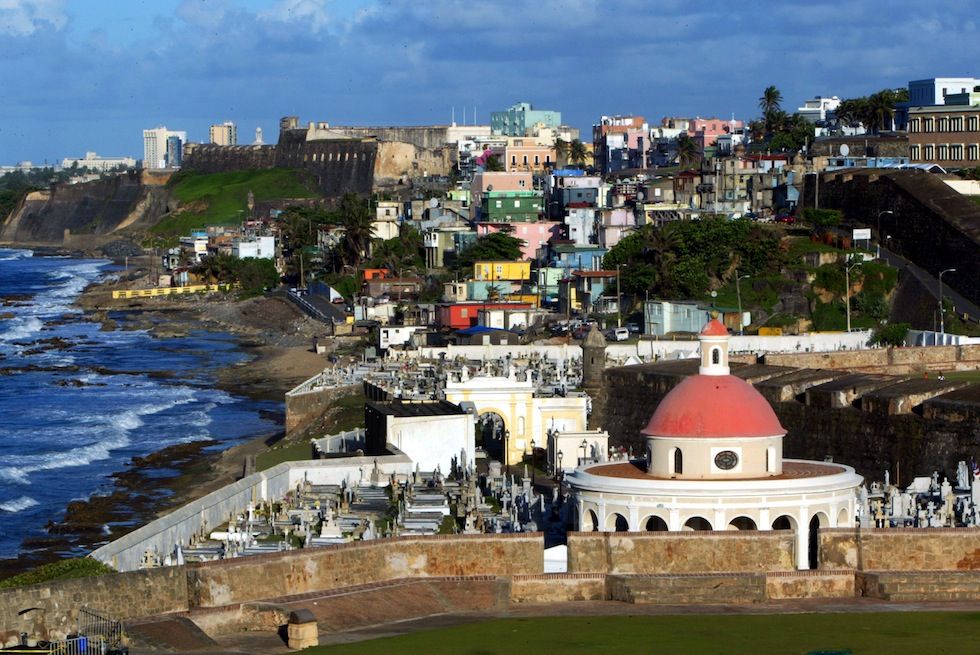
Departure Tax: 5 USD, usually included.
Flight Times: PR: New York 3 hours, Los Angeles
8 hours. Miami 2 hours, Europe 8 – 12 hours.
Ground Transportation: Cars and mini-buses provide low-cost public
transportation around the island, but w.e suggest to rent a car.
Ferry Service: Boat passage alone costs $135-400. Most charters
charge more for food, equipment, tour services, and snorkeling or diving.
Ports and harbors: PR: Guayanilla, Mayaguez, San Juan.
Politics
Ethnic groups: PR: White (mostly Spanish origin) 76.2 %, black
6.9 %, Asian 0.3 %, Amerindian 0.2 %, mixed 4.4 %, other 12 % (2007).
Government type: Commonwealth.
Legal system: Based on Spanish civil code and within the US Federal
system of justice.
Literacy: 94.1 %.
Religions: Roman Catholic 85 %, Protestant and other 15 %.
Economy
Agriculture-products: Sugarcane, coffee, pineapples, plantains,
bananas; livestock products, chickens.
GDP per capita: $17,100 (2009 est.).
Industries: Pharmaceuticals, electronics, apparel, food products,
tourism.
Natural resources: Some copper and nickel; potential for onshore
and offshore oil.
Unemployment rate: 12 % (2002).
The Ultimate Guide to Isla de Mona, the Galapagos of the Caribbean
View of the sea from Isla de Mona | © Felix Lopez/ Flickr
Mariela Santos
17 May 2017
The Isla de Mona, a small island off of Puerto Rico’s west coast, is a beautiful, uninhabited, and natural environment. That is why it’s commonly called the Galapagos of the Caribbean – which is no small compliment. Learn about this stunning location and start planning your visit right away.
Situated between Puerto Rico and the Dominican Republic, on the Isla de Mona – or Mona Island to give it its English name – there are many caves and a couple of beaches on the island, some of which are open to visitors.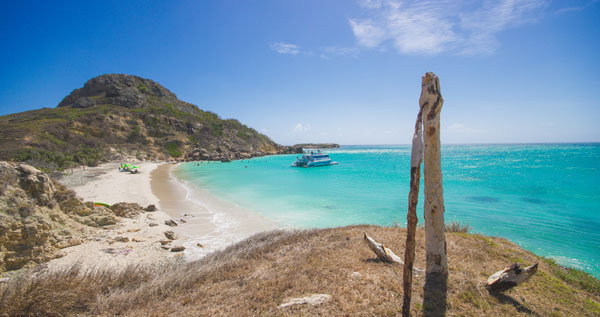 At the same time, it’s not the easiest island to travel to, and it is protected by the Puerto Rican government – which helps to explain why it’s uninhabited. A natural reserve, anyone who is allowed to visit needs to bring their own food and water, accommodations, and prepare for any eventuality they might think of as there are no island facilities.
At the same time, it’s not the easiest island to travel to, and it is protected by the Puerto Rican government – which helps to explain why it’s uninhabited. A natural reserve, anyone who is allowed to visit needs to bring their own food and water, accommodations, and prepare for any eventuality they might think of as there are no island facilities.
Cueva Diamante at Isla de Mona | © Felix Lopez/ Flickr
It is believed that the Tainos were present on Isla de Mona, possibly for hundreds or even thousands of years. However, their population was negatively affected when the Spanish arrived and stripped the island’s natural resources. Eventually the island was used by pirates for provisions, and as a point of attack against their enemies. Afterwards, the Spanish and U.S. governments mined parts of the island until the U.S. military began using it, before control was returned to Puerto Rico who now maintain it as “a natural paradise.”
This tiny island is approximately six miles in length and four miles wide, and is a rich landscape for activities such as hiking, camping, caving, snorkeling and scuba diving among the island’s colorful coral reefs, fishing and hunting (of non-indigenous animals such as pigs and goats), and – because of its remote location and lack of invasive light pollution – it’s an ideal spot for star gazing.
Waterfront at Isla de Mona | © Felix Lopez/ Flickr
The Isla de Mona is rich in biodiversity and island conservation; the Puerto Rico and Department of Natural and Environmental Resources and the U.S. Fish and Wildlife Service care for the island. They work to remove invasive species, and also protect endangered animals like the Mona ground iguana, Mona yellow-shouldered blackbird, and the higo chumbo cactus.
The Mona ground iguana in particular is native to the island, and not found anywhere else in the world. This type of iguana can grow to be around three to four feet (around a meter) long with two bulges on its head and horns by its snout.
Mona Ground Iguana | © U.S. Fish and Wildlife Service Southeast Region/ Flickr
To visit the island, it’s important to plan the trip well in advance: permits and transportation to the island are needed, and only 100 visitors are permitted at a time. There is one beach called Playa Sardinera, which is one of the most accessible beaches on the island. It is where police and rangers can be found, whose presence is to ensure the strict environmental rules are enforced: visitors must be careful of the flora and fauna on the island, making sure not to harm the habitat in any way.
It is where police and rangers can be found, whose presence is to ensure the strict environmental rules are enforced: visitors must be careful of the flora and fauna on the island, making sure not to harm the habitat in any way.
In order to go diving at Isla de Mona, it’s recommended to take various steps. First, contact the Department of Natural and Environmental Resources to get permission to visit the island. Then hire professional dive boat operators to facilitate the diving, and prepare to camp at the island if you’re staying the night – regular permits allow for a stay of up to three nights. Finally, factor in your diving skill level – some currents around the island are more challenging. Then, take the plunge and enjoy the adventure.
Since you are here, we would like to share our vision for the future of travel – and the direction Culture Trip is moving in.
Culture Trip launched in 2011 with a simple yet passionate mission: to inspire people to go beyond their boundaries and experience what makes a place, its people and its culture special and meaningful — and this is still in our DNA today.
 We are proud that, for more than a decade, millions like you have trusted our award-winning recommendations by people who deeply understand what makes certain places and communities so special.
We are proud that, for more than a decade, millions like you have trusted our award-winning recommendations by people who deeply understand what makes certain places and communities so special.
Increasingly we believe the world needs more meaningful, real-life connections between curious travellers keen to explore the world in a more responsible way. That is why we have intensively curated a collection of premium small-group trips as an invitation to meet and connect with new, like-minded people for once-in-a-lifetime experiences in three categories: Epic Trips, Mini Trips and Sailing Trips. Our Trips are suitable for both solo travellers and friends who want to explore the world together.
Epic Trips are deeply immersive 8 to 16 days itineraries, that combine authentic local experiences, exciting activities and enough down time to really relax and soak it all in. Our Mini Trips are small and mighty – they squeeze all the excitement and authenticity of our longer Epic Trips into a manageable 3-5 day window.
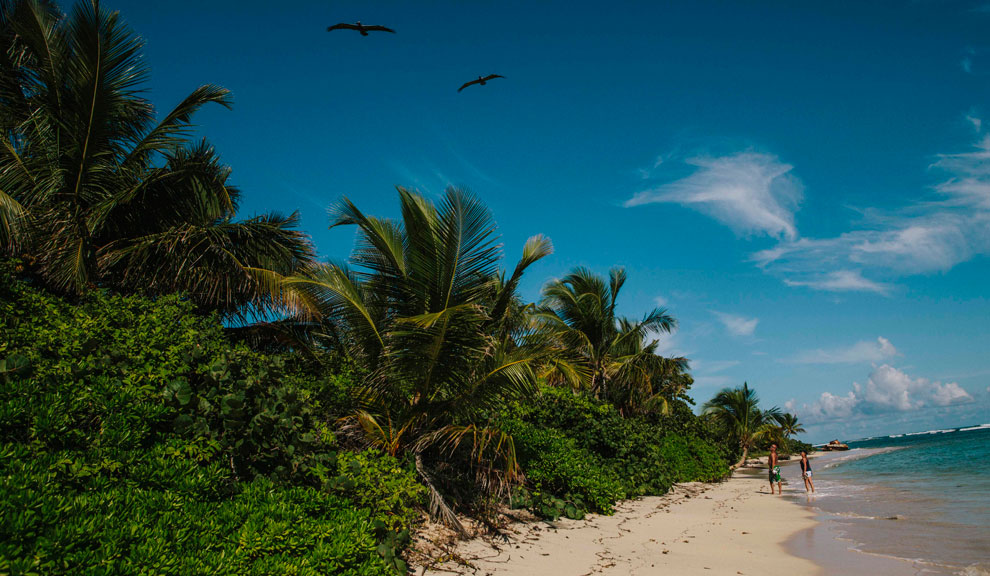 Our Sailing Trips invite you to spend a week experiencing the best of the sea and land in the Caribbean and the Mediterranean.
Our Sailing Trips invite you to spend a week experiencing the best of the sea and land in the Caribbean and the Mediterranean.
We know that many of you worry about the environmental impact of travel and are looking for ways of expanding horizons in ways that do minimal harm – and may even bring benefits. We are committed to go as far as possible in curating our trips with care for the planet. That is why all of our trips are flightless in destination, fully carbon offset – and we have ambitious plans to be net zero in the very near future.
Isla de Mona | vv-travel.ru
“Mona Island” redirects here. Mona is also the ancient or poetic name for the Isle of Anglesey or the Isle of Man.
Coordinates: 18° 5 12 N 67° 53 22 W??? /? 18.08667°N 67.88944°W? / 18.08667; -67.88944
Mona (Spanish Isla de la Mona) Is the third largest island in the Puerto Rico archipelago, after the main island of Puerto Rico and the Vicks. It is the largest of the three islands located in the Mona Strait, the strait between the Dominican Republic and Puerto Rico, the others being Monito Island and Desecheo Island.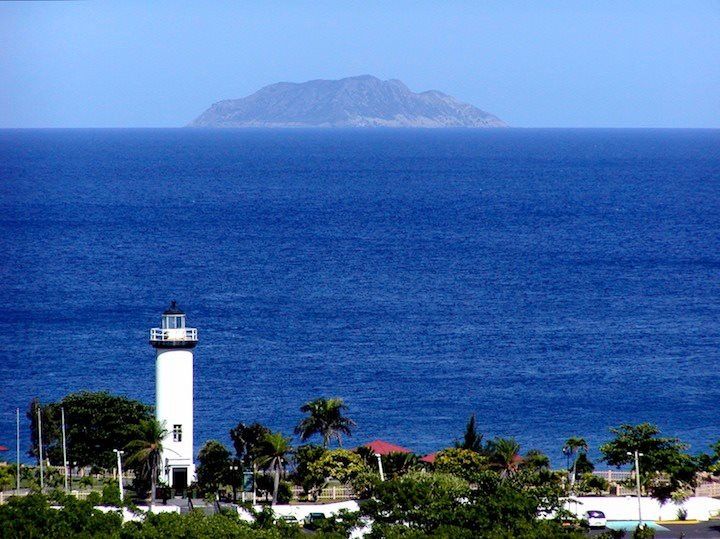 It measures about 11 kilometers by 7 kilometers (7 miles by 4 miles), and lies 66 kilometers (41 miles) west of Puerto Rico, of which it is an administrative part. The original name given to the island of the Taino Indians is Amona, which means “that which is in the middle”, referring to the journey between the islands of Puerto Rico and Haiti. It is one of two islands that make up Isla de Mona e Islote Monito Barrio from Mayaguez, Puerto Rico.
It measures about 11 kilometers by 7 kilometers (7 miles by 4 miles), and lies 66 kilometers (41 miles) west of Puerto Rico, of which it is an administrative part. The original name given to the island of the Taino Indians is Amona, which means “that which is in the middle”, referring to the journey between the islands of Puerto Rico and Haiti. It is one of two islands that make up Isla de Mona e Islote Monito Barrio from Mayaguez, Puerto Rico.
The island is a nature reserve and although there are no indigenous people, rangers from the island’s Department of Natural and Environmental Resources are on the island to manage visitors and take part in research projects.
Contents
History
Pre-Columbian History
Mona Island is believed to have been originally settled by Arawak Indians who came from Hispaniola (now Haiti and the Dominican Republic). Archaeological excavations at 19The 80s discovered many pre-Columbian objects on the island, which helped support historians’ theories from the island’s first inhabitants. Stone tools found in the rock shelter have been dated to around 3000 BC. [1] Much later, the island was inhabited by the Tainos (Arawaks of the Caribbean), and remained so until the arrival of the Spanish in the 15th century.
Stone tools found in the rock shelter have been dated to around 3000 BC. [1] Much later, the island was inhabited by the Tainos (Arawaks of the Caribbean), and remained so until the arrival of the Spanish in the 15th century.
Colonial Period
On November 19, 1493, during his second voyage to the New World, Christopher Columbus encountered the island now known as Puerto Rico, which the natives called Borinquen (or Boriken according to some historians), and which Columbus named San Juan Bautista (Saint John the Baptist). A few hours after setting foot in Puerto Rico, Columbus and his ships headed west to Hispaniola, where he expected to meet several crew members who had been left behind from his first voyage. Leaving Puerto Rico, he reputedly became the first European to sight the island on September 24, 1494, who was claimed to Spain. The name Mona comes from the Taino name Amun, bestowed by the natives in honor of the ruling Katzik or head of the island.
In 1502, Fray Nicolas de Ovando was sent to the Isla de la Mona to keep an eye, from a safe distance, on the native uprisings taking place in Haiti.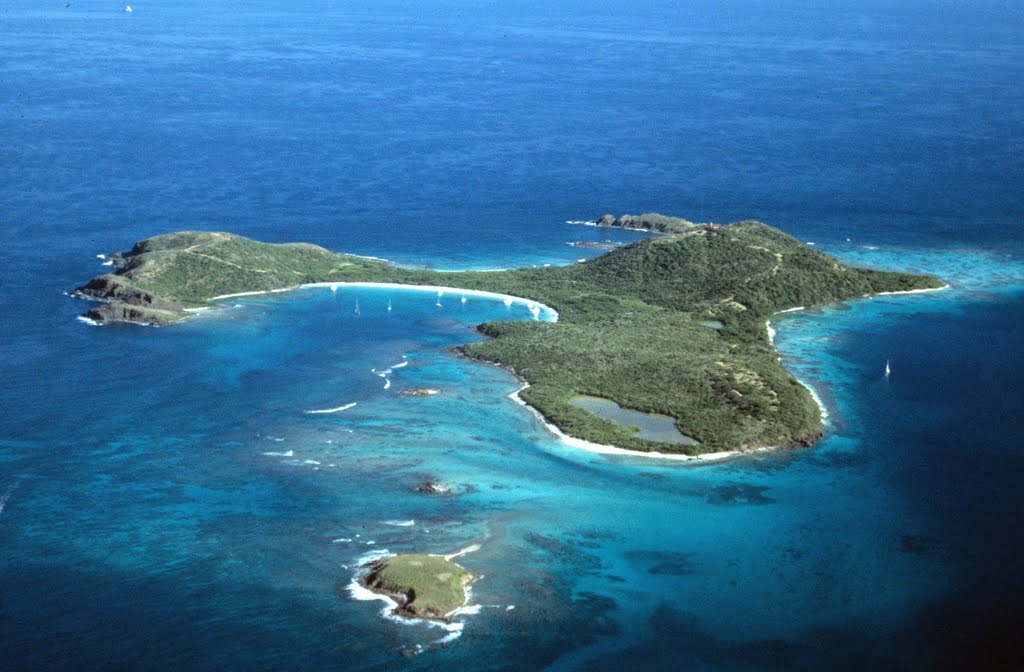 With a group of 2,000 Spanish settlers, Ovando was left in charge of establishing a permanent settlement on the island. Due to its small size and location, the island proved insufficient to accommodate such a large community, and food became rare, as supplies from Hispaniola and Puerto Rico were received infrequently.
With a group of 2,000 Spanish settlers, Ovando was left in charge of establishing a permanent settlement on the island. Due to its small size and location, the island proved insufficient to accommodate such a large community, and food became rare, as supplies from Hispaniola and Puerto Rico were received infrequently.
Juan Ponce de Leon, who accompanied Columbus on his first two voyages, became Puerto Rico’s first ruling governor. [2] In 1508, de León made several trips to the Mona Islands to collect goods and food from the Tainos living there. The island, which was in abundance of foodstuffs and other products commonly used in the Tainos as in the island of Mona and Puerto Rico, was considered valuable personally by the owner. In 1509, de León became interested in acquiring the island, and this sparked a bitter rivalry between him and King Ferdinand II of Aragon, who wanted Mona the island for his own private vacation retreat. [Edit]
In 1515, after some wrangling, Ferdinand II was able to recover the island from Diego Colón, Viceroy of the Indies. By then, Isla de la Mona was an important trade point between Spain and the rest of Latin America, as well as a rest stop for the crews of ships carrying slaves. With his ownership of the island, King Ferdinand II gave the Taino resident two options if they wanted to continue living on the island: they could work on fishing, making hammocks and growing plants, or they could become miners and help in the extraction of guano and other minerals. Realizing that mining would require hard work, most of the inhabitants decided to work as fishermen and farmers. By accepting this option, they were also exempted from paying imposed taxes, and were able to escape the hard labor of many other natives endured in the mines. Over time, people from other neighboring islands were brought to the Mona Islands to help with the labor.
By then, Isla de la Mona was an important trade point between Spain and the rest of Latin America, as well as a rest stop for the crews of ships carrying slaves. With his ownership of the island, King Ferdinand II gave the Taino resident two options if they wanted to continue living on the island: they could work on fishing, making hammocks and growing plants, or they could become miners and help in the extraction of guano and other minerals. Realizing that mining would require hard work, most of the inhabitants decided to work as fishermen and farmers. By accepting this option, they were also exempted from paying imposed taxes, and were able to escape the hard labor of many other natives endured in the mines. Over time, people from other neighboring islands were brought to the Mona Islands to help with the labor.
After the death of Ferdinand II in 1516, the ownership of the island was transferred to Cardenal Cisneros. The island changed ownership again in 1520 when Francisco de Barrionuevo became the island’s new owner. By 1524, Alonso Manso, Bishop of Puerto Rico, became interested in obtaining personal wealth, and he accused Barrionuevo, among other things, of committing various crimes within the Spanish justice system of the time. Because of this situation, Barrionuevo exiled himself to one of Spain’s colonies in South America, taking many Tainos along with him, and leaving the island practically deserted.
By 1524, Alonso Manso, Bishop of Puerto Rico, became interested in obtaining personal wealth, and he accused Barrionuevo, among other things, of committing various crimes within the Spanish justice system of the time. Because of this situation, Barrionuevo exiled himself to one of Spain’s colonies in South America, taking many Tainos along with him, and leaving the island practically deserted.
By 1522, ships from other major maritime powers such as England, France, and the Netherlands began arriving at Isla de la Mona to replenish supplies for their transatlantic voyages. The island also provided them with a place of refuge for pirates from which they could attack and plunder the Spanish galleons.
In 1561, during an audience held in Santo Domingo, it was recommended that Isla de la Mona should become part of this colony (which at that time occupied the eastern half of Hispaniol). The reasons offered were simply that the island was closer to Santo Domingo (now the Dominican Republic) than to Puerto Rico, and that it had a small population that could help the colony’s economy in general agricultural production. However, the petition was denied and the island continued to be politically part of Puerto Rico.
However, the petition was denied and the island continued to be politically part of Puerto Rico.
In 1583, the Spanish Archbishop of Puerto Rico received royal permission to bring Christianity to Mona Island. However, by this time most of the Taíno who remained on the island had either died or fled to mainland Puerto Rico due to frequent raiding by European (especially French) ships. From the end of the 16th century until the middle of the 19th century the island was largely abandoned by the colonial authorities. It appears to have been sporadically inhabited, although records from this period are somewhat sketchy. It continued to be used as a refuge from pirates and privateers, including the notorious Captain Kidd, who hid there in 1699 year. [3]
The island’s circumstances changed in the mid-19th century when it became the site of commercial guano mining operations. Various companies have obtained licenses to extract bat and guano (a valuable fertilizer and a key strategic commodity for the production of gunpowder) from the island’s caves. Mining continued until 1927. [4]
Mining continued until 1927. [4]
20th century
Mona Lighthouse Island
With the 1898 Treaty of Paris, Isla de la Mona, along with the rest of Puerto Rico, was transferred by Spain to the USA. Within two years of occupation, Mona’s Island of Light, left in an unfinished state since the beginning of the Spanish-American War, was completed and began its work. The lighthouse was, contrary to popular belief, not designed by the famous French engineer Gustave Eiffel (who also designed the world famous Eiffel Tower in Paris), but by the Spanish engineer Raphael Ravena in 1886. She’s still in continuous mode until 1976 years old when it was replaced by a new automated light.
On December 22, 1919, the island was declared the “Insular Forest of Puerto Rico”, under the auspices of U.S. Forest Law No. 22.
During Prohibition, the island had a history of smuggling, with its geographic location making it an advantageous position for rum runners to smuggle rum , bourbon, and other liquids. In 1923, a stash of liquor, drugs and perfume reportedly from the French islands of Martinique and Saint Martin and worth US$75,000 was found in the cave by customs officials.
In 1923, a stash of liquor, drugs and perfume reportedly from the French islands of Martinique and Saint Martin and worth US$75,000 was found in the cave by customs officials.
In 1942, at the height of World War II, a German submarine bombarded the south coast of the island. It was one of the few instances of this war in the Caribbean. From 1945 to 1955 Mona Island was leased to the US Air Force as a military exercise area.
Since 1941 the island has also been used for camping and goat and wild boar hunting. In 1960, a small ranger post was set up to monitor the island, operated by Puerto Rico’s Department of Natural and Environmental Resources.
In July 1972, the Board of Environmental Quality of Puerto Rico, due to the growing interest in the development of the islands, made a full scientific assessment of Mona and Monita using a local team of volunteer scientists. A two-volume report with maps of natural and historical features was produced. [6] It appreciated the climate, geology and mineral resources, soils, water resources, archaeology, vegetation, animals and insects, as well as pelagic life around the island. Shortly thereafter, geotechnical and bathymetry studies were conducted by engineering firms to determine the feasibility of using Monu as a deepwater terminal for transferring oil from supertankers to smaller tankers that would continue to the US mainland; this plan was not implemented.
Shortly thereafter, geotechnical and bathymetry studies were conducted by engineering firms to determine the feasibility of using Monu as a deepwater terminal for transferring oil from supertankers to smaller tankers that would continue to the US mainland; this plan was not implemented.
In 1981, Mona Lighthouse Island was listed on the US National Register of Historic Places as “Faro de la Isla de la Mona”.
In 1993 the island (perhaps all of it), as “Isla de la Mona”, was included in the National Register. [5]
Geography
Mona has an area of approximately 57 km2 (22 sq mi) and is located 66 km (41 mi) west of the main island of Puerto Rico, 61 km (38 mi) east of the Dominican Republic, and 49 km (30 mi) southwest of Desecheo Island, another island in the Mona Strait.
Mona has been designated an ecological reserve by the Puerto Rican government and is not permanently inhabited. The 2000 US Census reports six housing units but zero population.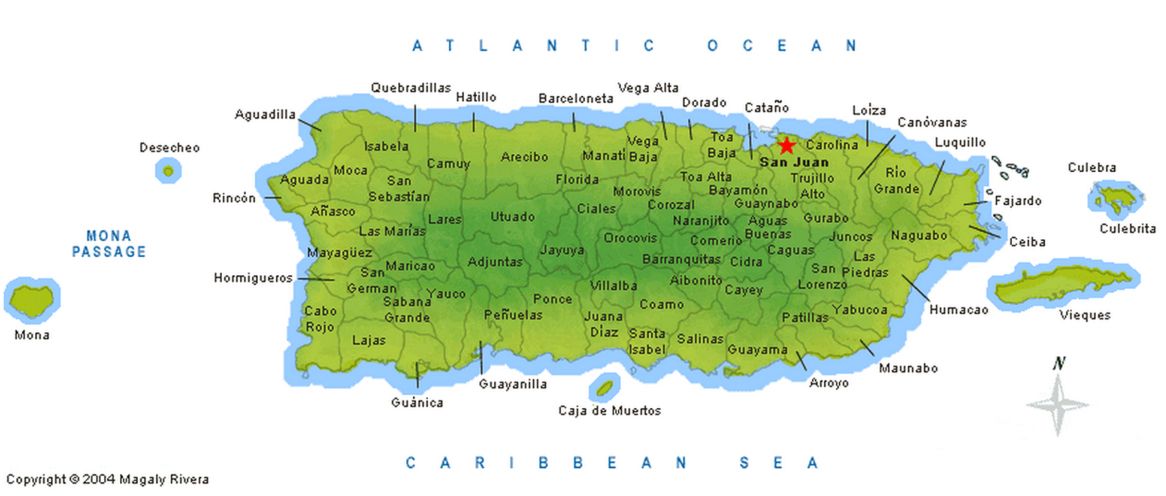 [7] The island is under the care (Barrio) of the Municipality of Mayaguez together with Monito Island 5 km to the northwest (Isla de Mona e Islote Monito Barrio). It is Mayagüez’s largest ward by area, and the only one without a permanent population. The total land area of both islands in Barrio is about 56.93 km? (Mona Island 56.783 km? And nearby Monito Island 0.147 km?), and this includes 28.3 percent of the total land area of the municipality of Mayaguez. Desecheo Island, 49km to the northeast, is part of the Sabanetas Barrio.
[7] The island is under the care (Barrio) of the Municipality of Mayaguez together with Monito Island 5 km to the northwest (Isla de Mona e Islote Monito Barrio). It is Mayagüez’s largest ward by area, and the only one without a permanent population. The total land area of both islands in Barrio is about 56.93 km? (Mona Island 56.783 km? And nearby Monito Island 0.147 km?), and this includes 28.3 percent of the total land area of the municipality of Mayaguez. Desecheo Island, 49km to the northeast, is part of the Sabanetas Barrio.
Mona is a mostly flat plateau surrounded by sea cliffs. It is made up of dolomite and limestone with numerous caves found throughout. With a dry climate and untouched by human development, many endemic species inhabit the island, such as the Mona First Iguana (Cyclura cornuta stejnegeri). Its topography, ecology, and modern history are similar to that of Navassa, a small limestone island located in the Jamaica Channel, between Jamaica and Haiti.
Land cover
Four types of land cover can be identified: [8]
- Cactus (11.
 27 km?) Highland Forest (40.28 km?) Central Depression Forest (1.47 km?) Coastal Forest (3.77 km?)
27 km?) Highland Forest (40.28 km?) Central Depression Forest (1.47 km?) Coastal Forest (3.77 km?)Beaches
Southeast
| Southwest
| West
|
The only campsites in Playa de Pajaros and Playa Sardinera. In addition, Playa Uveros, Pajaros, Playa Mujeres and Playa Brava are important for visitors.
Location of Mona Island within the Puerto Rico archipelago.
Mona overview map
Monito Island as seen offshore
Mona Island today
Buildings on Playa Pajaros on the south coast
The island now serves as a retreat for Puerto Ricans and nature lovers from all over the world, and has also become a popular destination for Puerto Rican Boy and Girl Scouts. Due to the islands’ unique topography, ecology and location, Mona, Desecheo and Monito have been nicknamed the “Galapagos Islands of the Caribbean”. Scientists, environmentalists, and students have visited Mona Island to study its distinct ecosystem, which includes the endemic Mona First Iguana. The island is also home to many rock paintings that were left behind by the original inhabitants of the island. Remains of the guano mining industry can also be seen.
Due to the islands’ unique topography, ecology and location, Mona, Desecheo and Monito have been nicknamed the “Galapagos Islands of the Caribbean”. Scientists, environmentalists, and students have visited Mona Island to study its distinct ecosystem, which includes the endemic Mona First Iguana. The island is also home to many rock paintings that were left behind by the original inhabitants of the island. Remains of the guano mining industry can also be seen.
An FAA-certified airport that can handle small aircraft was built by the Puerto Rican government. This airport does not have an ICAO or IATA code. The US Coast Guard is able to provide helicopter flights from Rafael Hernandez Airport to Aguadilla to help with medicines and first aid equipment; they also fly when an emergency requires hospitalization occurs. Private and commercial aircraft require a special permit issued by the Puerto Rico Department of Natural Resources to use the airport’s facilities.
The most common mode of transport is by private yacht, although commercial excursions are available from Cabo Rojo for small groups of up to twelve people traveling together.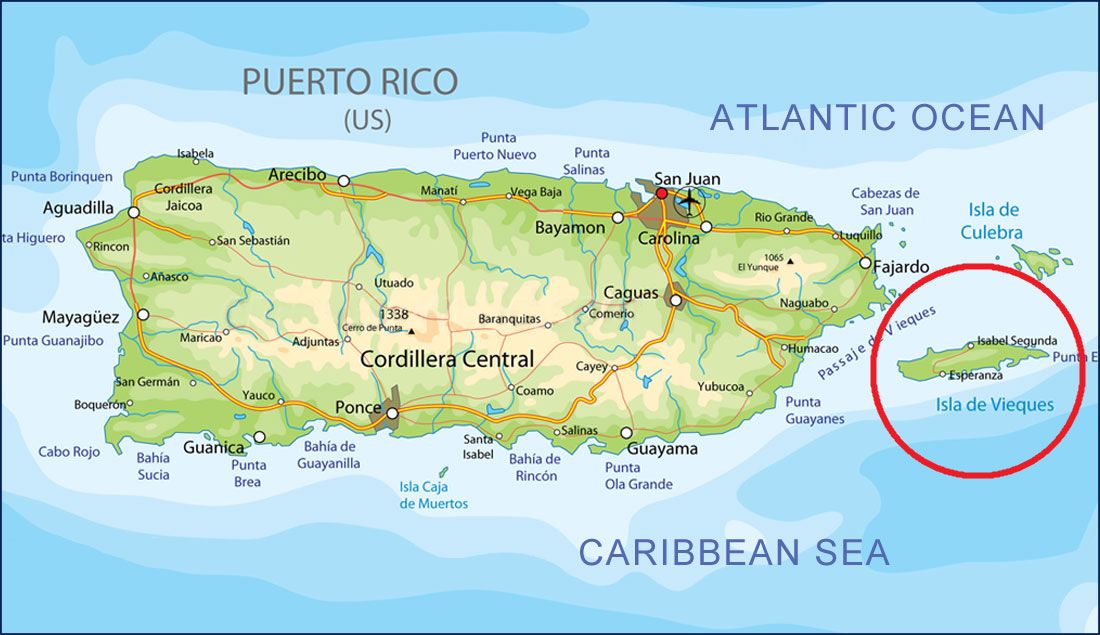
Hunting is permitted during the season to control population growth of non-native species (goats, pigs and feral cats) because they may pose a threat to various endangered species. The hunting season usually starts in December and ends in April. Camping is allowed from May to November.
In recent years, the island has become a major landing point especially for Dominicans, as well as Haitians, Cubans, Chinese and North Koreans trying to reach Puerto Rico illegally. In the US Commonwealth, Puerto Rico is considered by many illegal migrants as a stepping stone to the US. With the exception of Cubans, who are allowed to permanently reside in the United States due to that country’s wet feet/dry feet policy, all other illegal immigrants are generally promptly expelled from the country. [9]
The article has been translated automatically. Source: Wikipedia
overview and prices for policies
Updated
Get insurance online
In accordance with Puerto Rico Tourism Department guidelines [1] , foreigners entering the country must have an insurance contract that covers coronavirus testing upon arrival in Puerto Rico.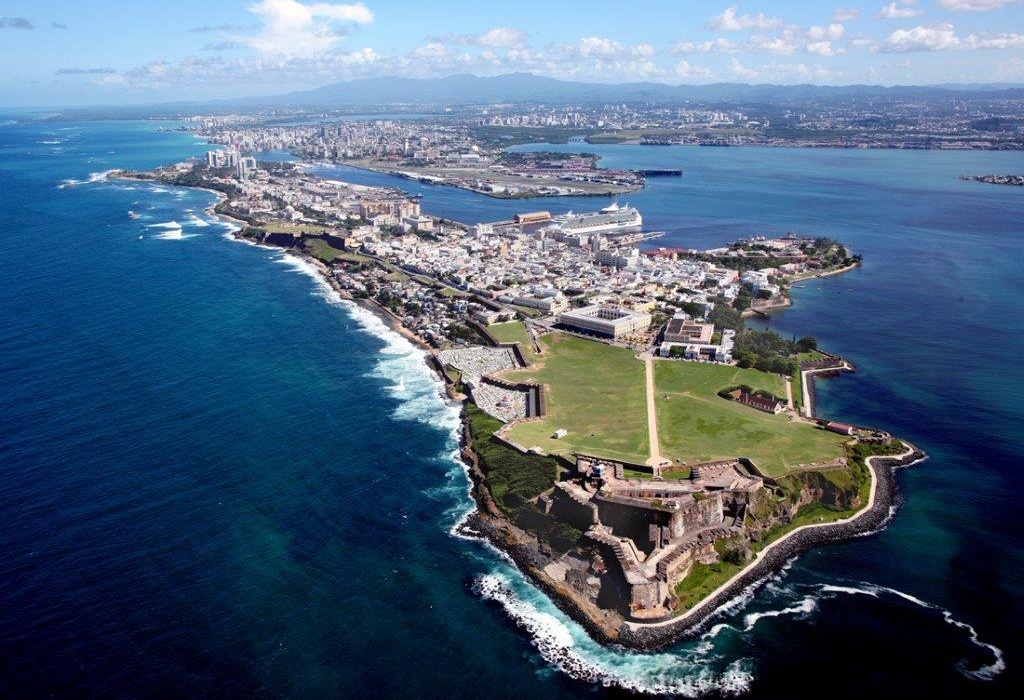
This publication provides data on the measures developed by the authorities of Puerto Rico for the safe entry of foreigners during the coronavirus epidemic. It also provides recommendations for obtaining a travel insurance policy in Puerto Rico, describes the features of the functioning of the local healthcare system and lists the algorithm of actions in the event of an insured event.
Contents of Publication
1. Restriction on entry to Puerto Rico for foreigners during the 2021 pandemic.
2. Puerto Rico insurance policy requirements
3. Cost of the policy for a trip to Puerto Rico
4. What to do if an insured event occurs
5. Emergency numbers
6. Medical assistance in Puerto Rico
7. Dangers for tourists
Restrictions on the entry of foreigners into Puerto Rico during the coronavirus pandemic 2021
Foreign nationals entering Puerto Rico must follow Protocol [2] issued by local authorities, as well as the entry rules established by the US Centers for Disease Control and Prevention.
Before the visit, foreigners must register online and fill out a special form [3] .
Foreigners over 2 years of age who have not been fully vaccinated against COVID-19 with Moderna, Pfizer or Janssen vaccines must provide documentary evidence of a negative PCR or antigen test for COVID-19 performed within 72 hours prior to arrival in Puerto Rico.
Foreigners arriving without test papers must pay a fine of USD 300. The fine will be waived if the visitor provides proof of a coronavirus test within 48 hours of entering Puerto Rico.
Upon entry, arrivals are screened with thermographic cameras to monitor their temperature, as well as an additional health check upon baggage claim before leaving the airport.
At Luis Muñoz Marín Airport, as well as at ferry crossings to the islands of Vieques and Culebra, foreigners have the opportunity to get vaccinated.
An insurance policy in Puerto Rico must cover coronavirus testing.
The insurance program is not valid for persons who have a residence permit and / or citizenship in the host country, with the exception of persons who have a residence permit (residence permit) for the purpose of education.
Before issuing a policy, you should consult with the consular service of the embassy of the country of travel, the migration service or other body authorized to establish requirements for health insurance policies for stay in the country.
Cost of the policy for travel to Puerto Rico
Additional information, addresses of representative offices of insurance / assistance companies in Puerto Rico is available in the description. To expand the field, click on the company name.
| Insurance company | 1 day | 10 days | 30 days | 1 year | Conditions and restrictions | |
|---|---|---|---|---|---|---|
| ① | Euroins | 86₽ | 866₽ | 3033₽ | 33742₽ | clause about COVID-19 is specified in the policy |
Assistance: Balt Assistance Sample policy: To organize medical care in Puerto Rico, Euroins Insurance cooperates with the assistance service Balt Assistance Balt Assistance contacts in Puerto Rico +7 495 134 00 35; +7 401 260 52 74 Buy | ||||||
| ② | Ingosstrakh | 208₽ | 2086₽ | 6260₽ | 76176₽ | clause about COVID-19 is specified in the policy |
Assistance: Balt Assistance Sample policy: In order to organize medical care in Puerto Rico, Ingosstrakh cooperates with the assistance service Balt Assistance. Balt Assistance contacts in Puerto Rico +7 (495) 137-50-20; +7 (401) 260-52-74 Buy | ||||||
| ③ | Agreement | 104₽ | 1166₽ | 4411₽ | – | clause about COVID-19 is specified in the policy |
Assitance: AP Companies Sample policy: For the organization of medical care in the territory of Puerto Rico, Consent cooperates with the assistance service of AP Companies. AP Companies Assistance Contacts in Puerto Rico +7 495 152 15 15 Buy | ||||||
| ④ | AlphaInsurance | 122₽ | 1226₽ | 3679₽ | 44772₽ | clause about COVID-19 is specified in the policy |
Assistance: Balt Assistance Sample policy: For the organization of medical care in Puerto Rico, AlfaStrakhovanie cooperates with the assistance service Balt Assistance. Balt Assistance contacts in Puerto Rico + 7 (495) 134-58-80 Buy | ||||||
| ⑤ | Tinkoff Insurance | – | 1771₽ | 5534₽ | – | clause about COVID-19listed in policy |
Assistance: Europ Assistance Sample policy: To organize medical care in Puerto Rico, Tinkoff Insurance cooperates with the assistance service Europ Assistance Europ Assistance contacts in Puerto Rico +7 495 771-64-11 Buy | ||||||
| ⑥ | RESO | 173₽ | 1276₽ | 3830₽ | – | clause about COVID-19 is specified in the policy |
Assistance: Balt Assistance Sample policy: To organize medical care in Puerto Rico, RESO cooperates with the assistance service Balt Assistance. Balt Assistance contacts in Puerto Rico +7 499 704 60 68 Buy | ||||||
| ⑦ | Renaissance | – | 543₽ | 1629₽ | – | clause about COVID-19 is specified in the policy |
Class Assistance: Class Assistance Sample policy: To organize medical care in Puerto Rico, Renaissance Insurance cooperates with the Class Assistance service. Puerto Rico Class Assistance contacts +7 495 984 80 86; +7 812 640 72 92; +7 812 644 72 92 Buy | ||||||
The information provided is advisory in nature. Before issuing a policy, it is necessary to familiarize yourself with the current version of the insurance contract and insurance tariffs.
Insurance policy in Puerto Rico
- Types of visas in Puerto Rico
- Puerto Rico Visa General Guidelines
According to Puerto Rico State Department Information [4] , foreigners visiting Puerto Rico are subject to US immigration regulations and laws. Traveling directly from the US to Puerto Rico does not constitute a departure from the US.
Citizens of Ukraine, Kazakhstan, Belarus and Russia can obtain a visa to Puerto Rico at the US diplomatic missions.
Puerto Rico visas are divided into two categories:
- Non-immigrant (de visas no-inmigrante).
- Migratory (Visas de inmigrante)
Non-immigrant visas include several groups:
- For tourist and business trips (Turismo, visita y negotios).
- For temporary work in Puerto Rico (Empleo).
- For studies and exchanges (Estudio e Intercambio)
Details [5] on Puerto Rico’s visa policy is available on the website of the State Department of the country.
- The duration of the insurance contract and the stay in Puerto Rico must match.
- Recommended insurance coverage is at least $50,000.
- The information entered in the policy (name and surname of the insured, policyholder, date of birth) must be entered in accordance with the document (passport or otherwise) on the basis of which the policy holder enters Puerto Rico.

- The policy must be effective on the date of the visit to Puerto Rico.
- The policy must be valid in Puerto Rico. In the event that an extended coverage area (Caribbean countries) is specified on the policy, it must include Puerto Rico as the country of destination.
- The policy can be issued either electronically or on the official letterhead of the insurance company.
Puerto Rico insurance policy advice
The right to enter the territory of Puerto Rico gives an American visa. However, the insurance contract issued for obtaining a US visa does not cover the territory of Puerto Rico. When applying for insurance, it is recommended to indicate the United States and Puerto Rico as the territory of coverage, or to conclude a separate contract for a trip to Puerto Rico.
Surfing is one of the most popular sports in Puerto Rico. For beginner surfers, La Pared beach in the northeast of Puerto Rico in the city of Luquillo is recommended. Experienced surfers arrive in San Juan from October to February. Also, surfing is popular on the northwestern coast of the country, in the areas of the cities of Ricon and Aguadilla. For a trip to Puerto Rico for the purpose of surfing, it is recommended to choose programs that cover this sport.
Experienced surfers arrive in San Juan from October to February. Also, surfing is popular on the northwestern coast of the country, in the areas of the cities of Ricon and Aguadilla. For a trip to Puerto Rico for the purpose of surfing, it is recommended to choose programs that cover this sport.
In Puerto Rico, diving is popular among tourists at the Coral Reef Sanctuary of Desecho Island near Ricon, diving from Crash Boat Beach in Aguadilla. Experienced divers dive in the “Caribbean Galapagos” (Mona Island), as well as wreck diving (diving to sunken ships) and diving in underwater caves in the area of the municipality of Culebra. For diving in Puerto Rico, it is recommended to include diving as an additional risk in the insurance contract.
When scheduling wreck diving and diving into high-risk caves, it is recommended to make sure that the insurance contract does not have restrictions on the depth of diving and does not restrict access to underwater caves.
The following sports must also be included in the insurance contract as additional risks:
- Snorkeling (swimming and snorkeling) at the beaches of Tamarindo and Carlos Rosario off the coast of Culebra, in the area of the La Cordillero Nature Reserve, and at the “blue beach” of La Chiva, Viex Island.

- Kayaking, SUP boarding in the areas of Condado and Isla Verde, visiting the bioluminescent bays of Mosquito Bay, La Parguera, Laguna Grande by floating means.
- Rafting on the rivers Aresio, Tamana.
- Travel around the islands on sailing catamarans and walks around the islands surrounding Puerto Rico by helicopter.
Puerto Rico Yacht Crew and Passenger Insurance
An insurance contract specifying the relevant risk is mandatory for yachting. It is recommended to indicate in the contract the coverage of such risks as:
- search and rescue,
- accidents,
- “helicopter evacuation”,
- medical transport / evacuation from the yacht to the place of medical care.
Due to the high cost of these services, it is recommended to increase the amount of insurance coverage to 50,000 – 100,000 dollars.
Not only Puerto Rico must be included in the contract, but all territories / countries along the route of the yacht, as well as the country whose flag the yacht sails.
When the ship is in neutral waters, it is recommended to indicate “the whole world” as the territory of the policy, without limitation on individual countries, since, in accordance with the UN Convention on the High Seas [7] , neutral waters do not belong to the territory of a particular country.
The policy should not contain restrictions on the validity of the insurance contract on the territory of the “high seas”.
The policy is issued online.
The policy file is sent to the policyholder’s e-mail within 10 minutes after payment.
The insurance contract is certified by EDS (electronic digital signature) in accordance with the law on electronic signature No. 63-FZ [6] of 04/06/2011.
EDS replaces the seal and signature of the insurance company. Additionally, you do not need to certify the policy.
It is recommended to print out the electronic insurance policy before the trip.
A printout of an electronic insurance policy is accepted by visa centers, consular services of embassies and migration services.
Procedure for the occurrence of an insured event
Step 1
Call the assistance company at the number indicated in the insurance policy and tell the call center employee all the details of the insured event – the nature of the injury or the symptoms and duration of the disease.
Step 2
Call 911 for an ambulance. Ambulance is provided to all patients, regardless of nationality.
Step 4
You should not pay for any medical services yourself, except for those that the insured person has agreed with the representative of the assistance company.
Step 3
If the recommended med. the institution is located far from the current location of the insured, ask the representative of the assistance company to clarify how the victim can be delivered there and whether such transportation will be paid by the insurance company in the future.
Important
Do not apply to medical institutions (hotel doctors) before receiving approval from the assistance company.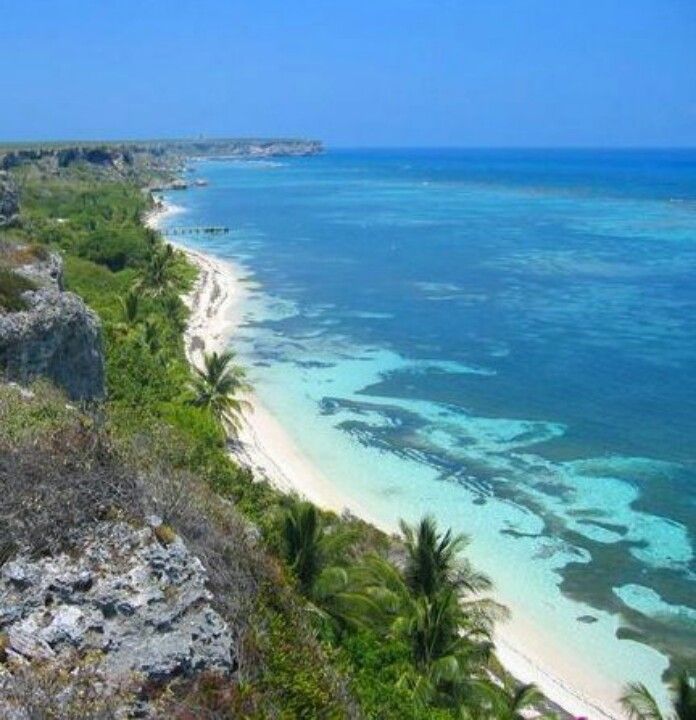 You will have to pay for such appeals on your own and there is a high risk that in the future these costs will not be compensated by the insurance company.
You will have to pay for such appeals on your own and there is a high risk that in the future these costs will not be compensated by the insurance company.
Emergency numbers
- emergency operational service (fire brigade, police and ambulance): 911.
Where you can get free medical care
For free medical assistance, you can contact the local office of the International Committee of the Red Cross: +41 22 734 60 01.
Medical assistance in Puerto Rico
Puerto Rico’s healthcare system is similar in structure to America’s. Access to medical services for the population and foreigners is possible with a health insurance policy. Due to the low level of well-being of the population, part of the cost of health insurance is covered by the government. The country has a program similar to the American Medicaid – programs to help people with limited incomes.
The health care system is managed by the Department of Health [8] [Departamento de Salud], whose head is appointed by the Governor.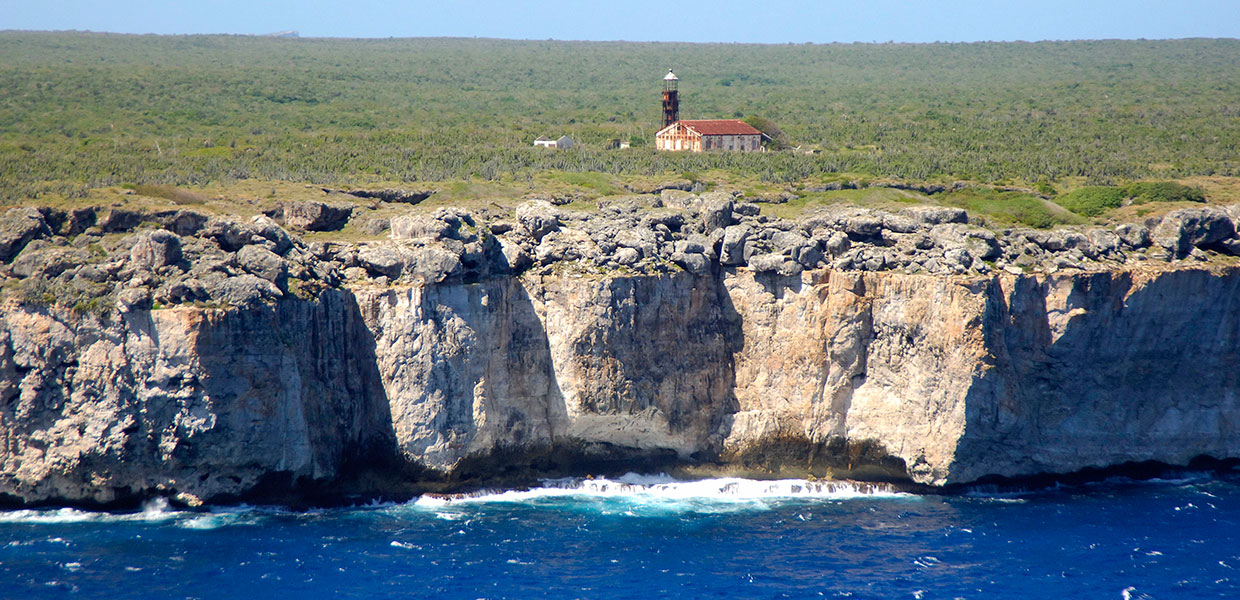 The public health sector suffers from a lack of funding and skills. Due to lower wages in Puerto Rico compared to the US, qualified medical professionals prefer to seek employment in the US. As a result, public clinics in Puerto Rico are experiencing queues for medical services.
The public health sector suffers from a lack of funding and skills. Due to lower wages in Puerto Rico compared to the US, qualified medical professionals prefer to seek employment in the US. As a result, public clinics in Puerto Rico are experiencing queues for medical services.
Foreigners visiting Puerto Rico are advised to seek medical services at private medical facilities that have better (modern) medical equipment and qualified staff.
Despite the shortcomings of Puerto Rico’s healthcare system, it is considered one of the best in the region.
Health Directory [9] Puerto Rico is available on the website of the country’s Department of Health. Description 9 is also available there0142 [10] clinics providing specialized medical services.
List of clinics providing assistance to foreigners:
- Auxilio Mutuo Hospital
Ardes: Spanish Hospital Auxilio Mutuo Ave. Ponce de Leon, Parade 37 ½, Hato Rey
Tel: 787-758-2000 - Ashford Presbyterian Community Hospital
Ardes: 1451 Ave Dr Ashford, San Juan, 00907
Tel: +1 787-721-2160 - Bella Vista Hospital
Ardes: Hwy 349Km 2. 7, Cerro-Las Mesas, Mayagüez, 00681
7, Cerro-Las Mesas, Mayagüez, 00681
Tel: +1 787-834-6000
Pharmacies
Pharmacies are located throughout Puerto Rico. They employ qualified staff who speak Spanish and English. As in the US, drugs are not available without a prescription. Travelers taking prescription drugs are advised to purchase the necessary (sufficient) amount of medication for the duration of their stay in Puerto Rico. In case of a shortage of drugs, they will need to contact the local doctor for a prescription, optimizing the appointment and tests.
Hazards for tourists
- Required vaccinations
- Insects and animals
- Kitchen
- Weather
- Drinking water
- Crime situation
There are no required vaccinations to visit Puerto Rico. It is recommended to be vaccinated against rabies and hepatitis, tetanus, and measles before the trip. For more information about vaccinations for a visit to Puerto Rico, follow the link.
Like many other countries in the Caribbean, mosquitoes and ticks that carry various infectious diseases, as well as wild animals, contact with which can lead to rabies, are dangerous in Puerto Rico.
Puerto Rican cuisine is rich in seafood and grilled meat dishes. Due to the possible occurrence of problems with digestion and the possibility of allergic reactions, it is recommended to include in the policy the risks of stopping chronic diseases and the risks associated with allergic reactions.
Puerto Rico has a mild maritime tropical climate. Average annual fluctuations in temperature do not exceed +28 – +30°С. The rainy season lasts from April to November and the dry season from December to April. Due to the fact that Puerto Rico is located in the hurricane zone, it is recommended that you include natural disaster insurance in your policy.
Water in Puerto Rico is considered suitable for drinking and hygienic purposes.
Puerto Rico is considered one of the safest countries in the Caribbean region, but the crime rate in the country is high.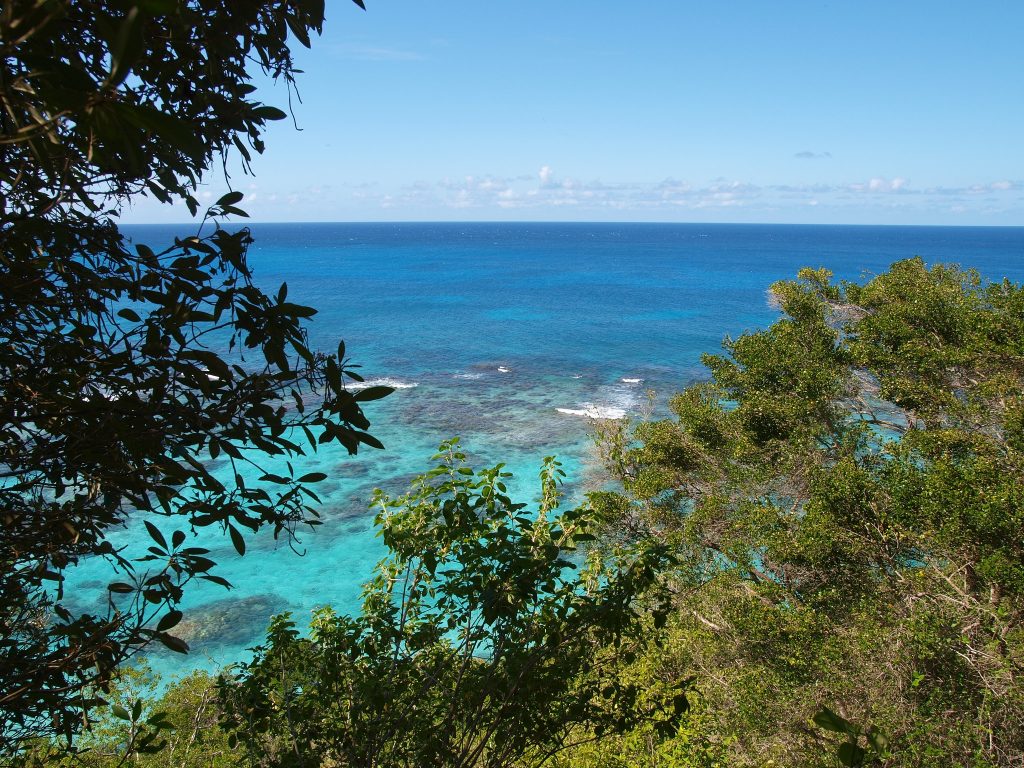
 eu
eu  eu
eu 
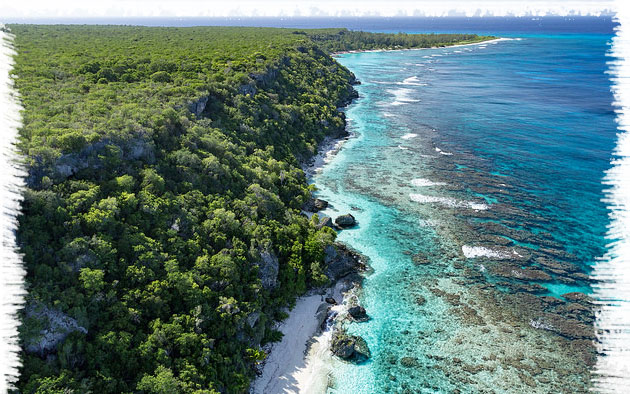 ru
ru
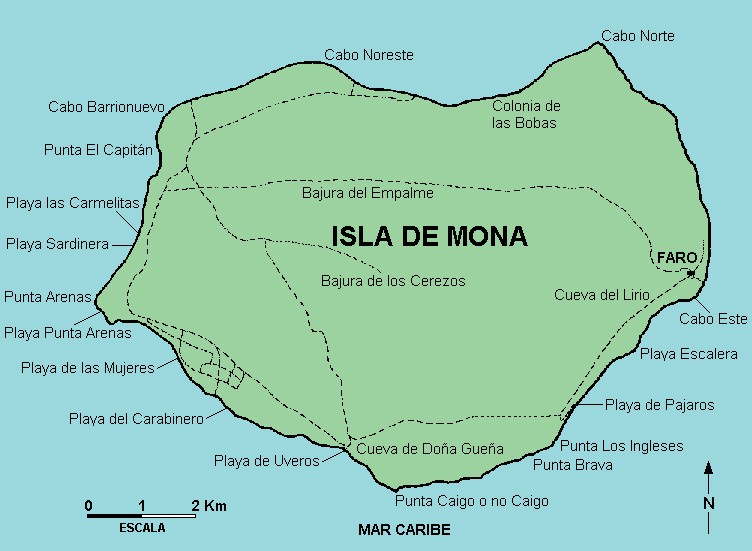
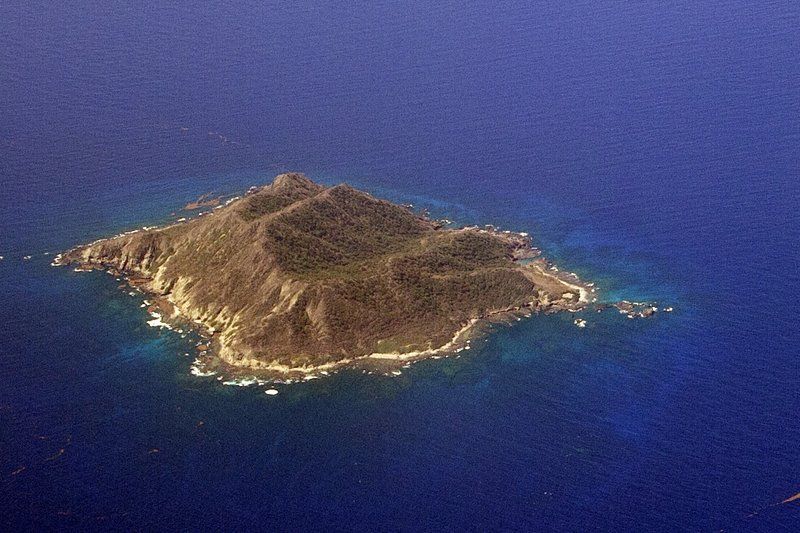
 7, Cerro-Las Mesas, Mayagüez, 00681
7, Cerro-Las Mesas, Mayagüez, 00681